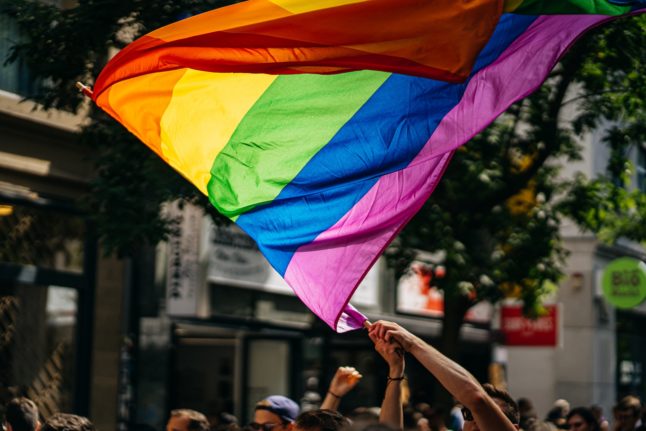A survey carried out by Norway’s Ministry of Culture and Equality in 2022, found that Norwegians’ attitudes to Lesbian, Gay, Bisexual and Transgender people had become even more liberal since 2008. As many as 83 percent of respondents said they were positive to the idea of two people of the same sex living together as a couple, compared to 70 percent in 2008.
The country was still, however, less liberal towards transgender people, with only 51 percent saying they were positive about people who had changed gender in 2022, compared to 36 percent in 2013, when the question was first asked.
This may contribute to the high number of transgender people reporting low life satisfaction
A survey published by Statistics Norway on January 4th found that LGBT people were more likely to report that they had a low quality of life than hetrosexual and gender normal people.
About 31 percent of gay men and 36 percent of lesbians reported having a low quality of li e, compared to 26 percent for hetrosexual people.
As many as 52 percent of those who defined themselves as pansexual, meaning they fall in love with people regardless of gender, said they had a low quality of life, 42 percent of people who defined themselves as bisexual, and 58 percent of those who defined themselves as asexual.
Law
Norway legalised gay sex in 1972 and then, in 1981, became the first country in the world to ban discrimination against LGBT people.
The country allowed same-sex registered partnerships in 1993 and same-sex marriage in 2009 (although it took the Church of Norway until 2016 to allow them in its churches).
Married and same-sex gay couples are permitted to adopt children under Norwegian law if they can show they are capable of bringing up the child. People who live alone – gay or straight – are also allowed to adopt if they can show they are capable of being the sole carer.
Lesbians have the right to receive assisted reproduction in Norway, whether in a couple or not. If they have a spouse or stable live-in partner, they become a legal parent “from the moment of conception”. Gay men, however, are excluded, as surrogacy is not permitted.
In 2016, Norway passed a law allowing transgender people to change legal sex through “self-determination” without assessment by a doctor or psychiatrist.
On January 1st, 2024, so-called “conversion therapy”, which seeks to change somebody’s sexual orientation or gender identity through therapy, was banned.
Support groups
Oslo Pride, is Norway’s biggest celebration of queer love and diversity, will be held this year between June 21st and June 29th. See preview here. The smaller Bergen Pride happens on August 1st.
Many other cities, such as Trondheim and Stavanger have their own Pride gatherings.
The Norwegian Organisation for Sexual and Gender Diversity (FRI) has campaigned for LGBT people in Norway since 1952. It has premises in ten different cities across the country, which offer meet-up groups, lectures, and advice.
The FRI spin-off, Queer Norway or Skeivverden, is targeted at foreigners living in the country, or Norwegians with minority backgrounds. Skeive Studenter, or Queer Students, is for people at university, and Skeiv Ungdom, or Queer Youth, is for people under the age of 30.
Healthcare
You can be tested for sexually transmitted diseases such as HIV, chlamydia, gonorrhoea and syphilis at all GP offices in Norway, according to the national health website Helsenorge, with drop-in testing at specialist clinics in major cities and testing at youth health centres, student health services and abuse reception centres.
The Olafia clinic at Oslo University Hospital has drop-in testing for men who have sex with men, women who have sex with women, trans and non-binary people. You can also book a test time by ringing reception on +47 23 07 58 40. There is no online booking system.
Haukeland University Hospital in Bergen has drop-in testing for sexually transmitted diseases at its clinic, with queue tickets given out from 8am. Test appointments cannot be booked online or by phone. You can order home tests for chlamydia and gonorrhoea here.
Stavanger University Hospital offers appointments for testing at its clinic for sexually transmitted diseases, with those seeking appointments required to fill in a questionnaire beforehand.
St Olav’s University Hospital in Trondheim requires people seeking tests to make an appointment online, with the hospital promising short wait times.
The Church of Norway’s Church City Mission runs rapid HIV tests at sites in Oslo, Bergen, Trondheim, Stavanger and Haugesund, which you can find here.
Gender reassignment
To change your legal gender in Norway, you have to contact the Norwegian Tax Agency using this form here.
If you want to receive hormone treatment or gender reassignment surgery, however, you will need to visit your GP, who will then refer you to the local district psychiatric centre, where you will be given an assessment and offered counsel.
If treatment is approved, you will be referred to the National Treatment Service for Gender Incongruence at Oslo University Hospital, which has a KIDS unit for under 18s, and an adult unit called AKV.
Assisted reproduction
If you wish to receive assisted reproduction, you must first obtain a childcare certificate from the police proving that you, or your partner, are a suitable parent, and then go through your GP, who will refer you to a fertility treatment centre in Oslo, Bergen or elsewhere.



 Please whitelist us to continue reading.
Please whitelist us to continue reading.
Member comments